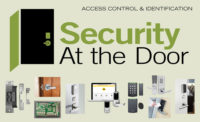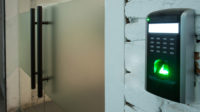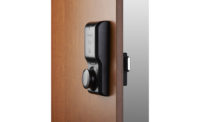Even though the mechanical industry of locks and door hardware has entered — along with the rest of the world — into the age of Wi-Fi and wireless, there’s still the physical need to install, repair and even retrofit existing solutions to meet end users’ evolving security needs.
“A typical wired opening consists of a number of discrete components around an opening: a locking device — whether it’s a strike, maglock or electro-mechanical lock — a wall reader, sensors for door position and request to exit, and so forth,” says Lester LaPierre, director of business development – electronic access control, ASSA ABLOY, New Haven, Conn. “All these discrete components are mounted around an opening. Often, these drops are required to be in conduit, which means involving multiple trades to install one opening.”
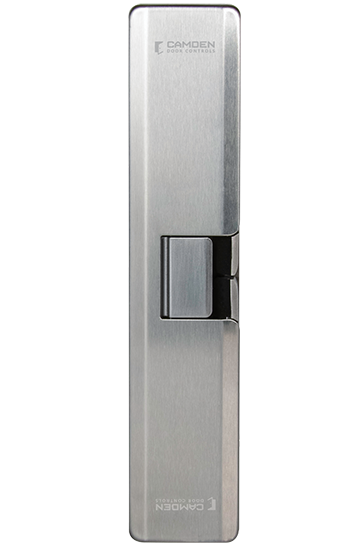
Wireless locks have made this somewhat easier, LaPierre adds. “With today’s intelligent wireless and Wi-Fi solutions, these components are integrated into a single locking device, which simplifies installation considerably. Instead of multiple trades taking six to eight hours for a single opening, trained and certified integrators can have an opening online in under an hour. The simplicity of today’s smart door security solutions also reduces points of failure and repair time since there are fewer components and far less wire involved.”
However, even with the increasing ease of installation some products offer, time and time again, security industry experts stress the importance of having an understanding of the doors you’re working on, the hardware they need, and the regulations that they are subject to.
Advice Avoiding Installation Pitfalls
Several experts interviewed for this article offered sage advice for security dealers and integrators on working with locks and door openings.
According a spokesperson from SDC, Camarillo, Calif., one of the most important elements of the lock and door hardware install is the power supply. “Based on more than 50 years of our manufacturing experience, 75-85 percent of access control operating problems and technical support calls are due to power issues,” the spokesperson says. “Linear power supplies have been used for years to power resistive, capacitive and inductive loads — devices with coils or solenoids, such as electromechanical and electromagnetic locks and strikes — due to their ability to handle large inrush currents. … However, the penalty in using a linear power supply is the heat generated by the regulator component of the supply due to its moderate efficiency. The heat generated can lead to early failure of the temperature sensitive components housed near to the supply board.”
Murray Lewin, senior product manager, access control solutions dormakaba, Indianapolis, Ind., says to keep an eye on which products you use. “We always emphasize using products that are well established and have appropriate certifications for the opening for optimal performance,” Lewin says. “These are actual certifications such as UL or BHMA that are listed on stickers placed on products or etched onto the product itself. Products that state they ‘meet the requirements for certifications’ but do not have the actual certification credential visible, are not typically tested to the same high standards of performance criteria.”
“Instead of multiple trades taking six to eight hours for a single opening, trained and certified integrators can have an opening online in under an hour. The simplicity of today’s smart door security solutions also reduces points of failure and repair time since there are fewer components and far less wire involved.”
— Lester LaPierre, ASSA ABLOY
Some of the most common advice is as simple as making sure that nothing is assumed. “Most doors have a 3-foot opening, but don’t assume,” says Mark Dawson, design estimator at Preferred Technologies, Houston, SDM’s 2023 Systems Integrator of the Year. “Make sure you take time to document the door. Just pull the tape measure out and measure how wide the door is. What style is the door? What is it made out of? You need to think about the door in its totality. What’s going to be the best lock to secure this opening? And getting those little details right is the difference between a professional install.”
This advice becomes even more important when other regulations — or even just different hardware — are involved in the install. “An example of this would be a hospital setting requiring push plates,” says Jim Engelerdt, business owner, access hardware solutions ANSI, dormakaba, Indianapolis, Ind. “It’s important to note what will be traveling through the opening. In the case of the hospital example, if a gurney needs to be able to get through the opening while the automatic push plate is in use, how much time needs to pass to allow that to happen? Choose the products that can be set up to allow for the activity that will take place at the door.”
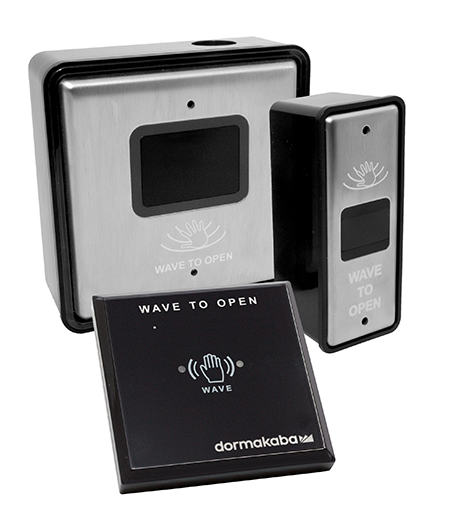
One regulation to pay particular attention to is the fire rating of the door, especially when retrofitting. “The next biggest issue with retrofits is fire ratings,” Dawson says. “[When] you have a fire-rated door … you can’t make any alterations to that door without altering the fire rating of that door. If you’ve got a customer that comes to you that says, ‘Hey, we’ve got this door here, and it’s now become a point of access control we need to manage.’ And you see that that door’s got a label on it — 15-, 30-, 45-minute fire rating label — that becomes a bit of an issue trying to alter the door from the way that it was prepped from the factory.”
Yong K Lacy, director of product management, Commercial Americas at Allegion, Carmel, Ind., agrees. “Understand what type of openings that you’re dealing with,” he says. “If you’re doing an upgrade or repair on a fire-rated door, then you need to make sure that all the hardware itself — as well as the way it’s installed — is meeting the fire rating. Understand the code and make sure that you are not doing work that’s not congruent with what that opening was designed to be.”

“These are not DIY installs. You need a trained professional — a locksmith or a carpenter — drilling your hole. Just an eighth of an inch off can be the difference between a satisfactory install and performance of the product versus the product binding or something sticking.”
— Brian Telljohann, Allegion
According to Dawson, another component of the installation that is often forgotten is the door closer. “An access control system is only as good as the door is shut,” he says. “So if the doors are not automatically shutting that’s a problem. I’ve seen multiple salespeople get into problems where they sell an access control door to a customer where we’re going to come in and retrofit it, and they forget the door closer.
“That means people are physically required to go and shut the door in order for it to remain secure. And that has to happen every time someone goes through that door. If you’ve got someone monitoring it then you can get away with not having a door closer, but that is a major pain to have someone sit there and babysit a door.”
And finally: precision is paramount. “For locks, we’re drilling holes through the door,” says Brian Telljohann, director of product management, electronics, Allegion. “So door preparation is key. These are not DIY installs. You need a trained professional — a locksmith or a carpenter — drilling your hole. Just an eighth of an inch off can be the difference between a satisfactory install and performance of the product versus the product binding or something sticking.”
Gaining Access to Knowledge
Accessing lock and door hardware knowledge has never been easier. Manufacturers are making these assets available through hard copies and QR codes as well as on their websites and on platforms like YouTube. “Hard copies, we’re going to continue to include them in most of our products,” Lacy says. “It’s still a must, but the way people learn as well as reference some pertinent information has definitely changed. People want interactive, people want bite-sized.

“We’ve been spending a lot of time creating new tools as well as repurposing other tools,” Lacy continues. “We used to produce 10 minute long videos, but the way people want to consume sometimes is on the phone. … It is more chapter-based instead of the entire video. So we’re very mindful of the type of information as well as how our channel partners and end users are consuming the reference material.”
Peter Lowenstein, vice president of sales, Alarmlock at NAPCO Security Technologies, Amityville, N.Y., says his organization is offering similar resources. “We’ve got a handful of things on our website,” Lowenstein says. “There’s a door specification guide you can use. You can actually see the different hardware on different doors. We’ve got reference to some pretty well circulated documents — which include our opening and operations guides — like narrow sheets that operate as a checklist as you’re walking through a facility.”
And the experts all agree that installers should be utilizing those resources provided by manufacturers. “Leaning on the industry help, whether that’s distribution or manufacturer rep, is really crucial to make sure you’re speccing precisely what it is,” Dawson says. “Sizing is important. Color matching is important. You can lean on your distributors and your manufacturer reps to help out with this one.”
Engelerdt agrees. “I can’t stress enough that dealers and installers take advantage of the resources available from suppliers to help with door projects,” he says. “In addition to education and certification opportunities, dormakaba is adding QR codes on products and packaging that contain product information, training, and other details that can help answer questions and solve problems in real time. This doesn’t take the place of customer service but can help answer many questions.”


